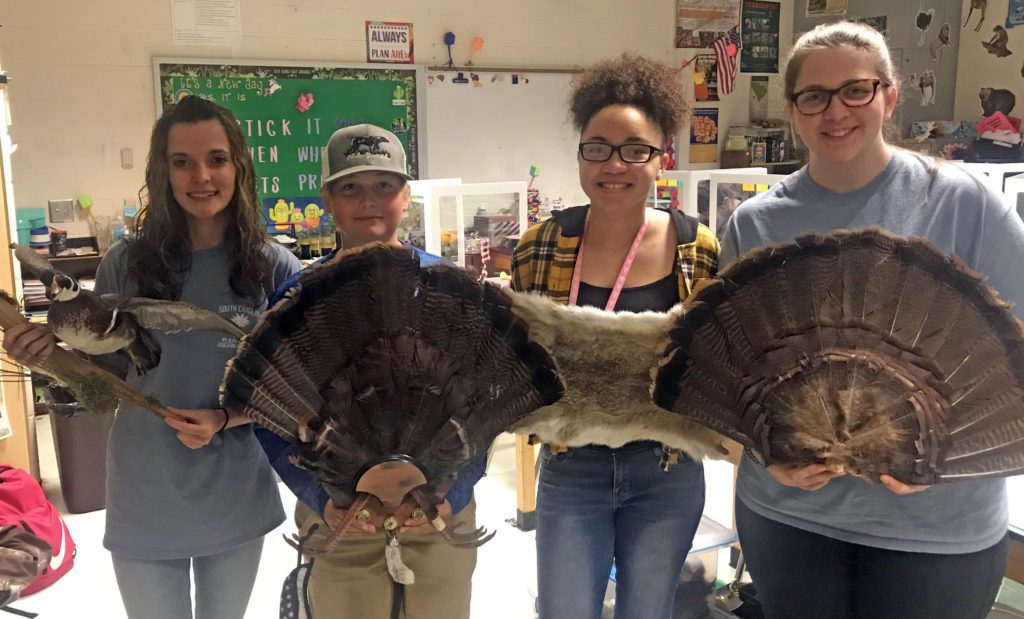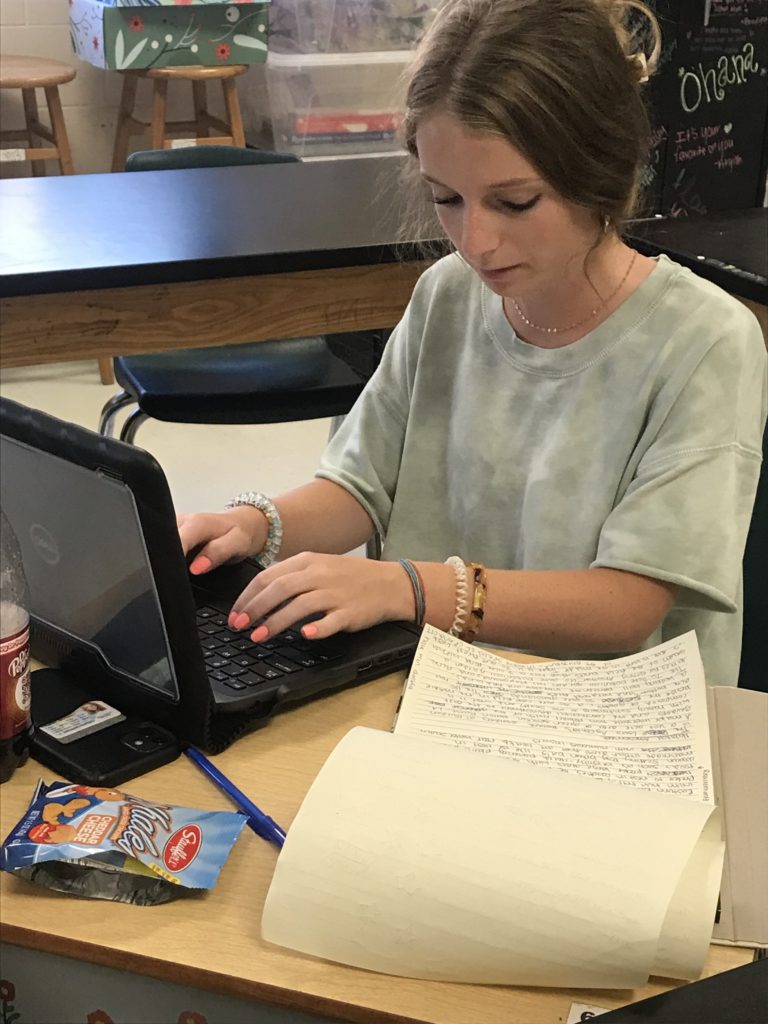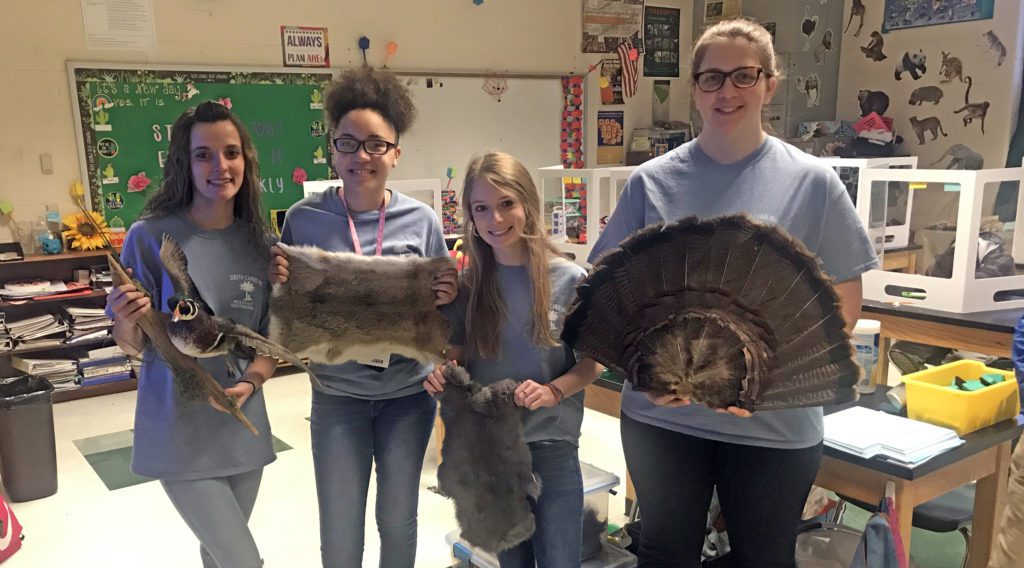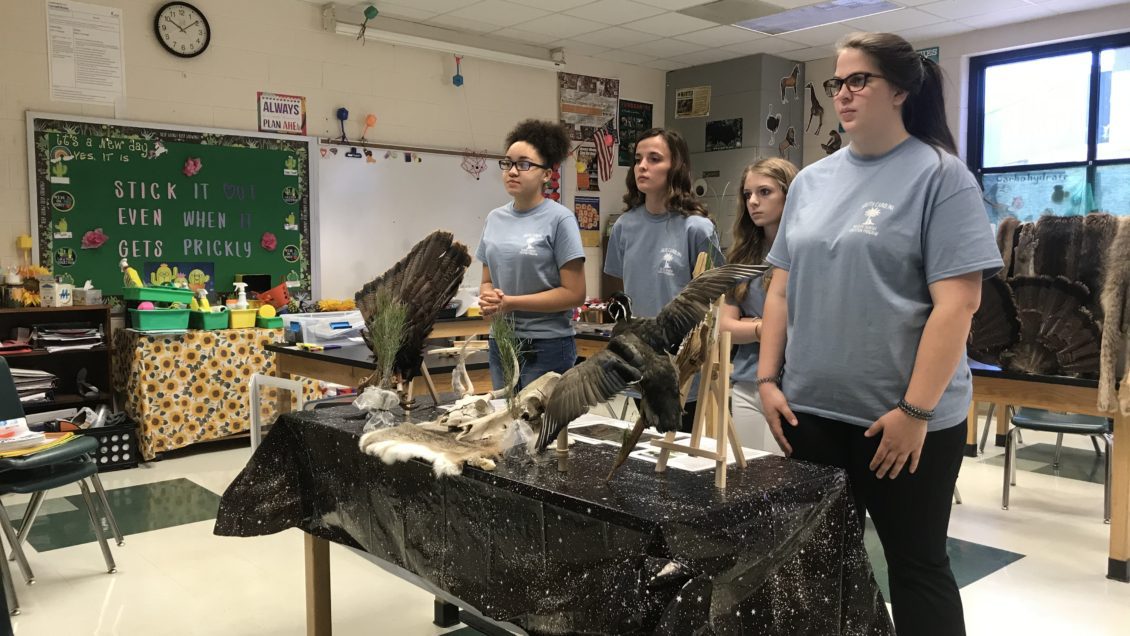Showing up at school on Saturday and Sunday isn’t most young people’s idea of a good time, but a group of South Carolina high school students turned it into a national championship weekend.
The team of Kaden Cooley, Emma Garrett, Stacey Martin and Khloey Moore from Laurens High represented the South Carolina 4-H team and won first place in their division at the National Wildlife Habitat Education Program (WHEP) Contest, the culmination of a hands-on environmental education program that gives participants an opportunity to test their wildlife knowledge.
“This contest gave my students a challenge, and they stood up to it big time,” said Laurens High biology teacher Erika Pisik, who coached the team alongside S.C. 4-H Youth Development Agent Mallory Maher.
WHEP is a 4-H and FFA natural resource program dedicated to teaching wildlife and fisheries habitat management to youth between the ages of 8-19, and the team was selected from the State WHEP Contest hosted in May by Clemson University to represent their home state at the virtual National WHEP Contest hosted in July by Kentucky and the National WHEP Committee.

An FFA team from Loris High School in Horry County also competed in the event, making South Carolina the only state with both an FFA and 4-H team representing it at the competition.
“I am beyond proud of the way that we formed as a state,” said Maher, who operates out of the Oconee County office of Clemson Cooperative Extension.
This year’s National WHEP Contest focused on urban wildlife, the first time it has ever been the focus of the competition, and the opening night featured a guest speaker, Seth Magle from the Urban Wildlife Institute, who discussed urban wildlife in cities and how the way cities are built can be changed by the way they are planned.
“Dr. Magle used a great quote from Aldo Leopold: ‘The weeds in a city lot convey the same lesson as the redwoods,’” Maher said. “I thought it was a great message on how we can promote conservation in urban areas. Typically, the contest focuses on the ecoregion where the national contest is being held, but since it was virtual this year, urban wildlife became the focus. The majority of people live in urban areas, and every city has urban wildlife, so this was perfect for the virtual setting.”
After getting a taste of the virtual contest last year, Pisik set out to assemble another team for this year’s contest, all of whom — including two who competed as individuals — had been students of hers in either biology or earth science.
“These six students stayed after school for two weeks in our Raider Reinforcement to train — they looked at pelts, practiced listening to calls, observed tracks and read through the material provided,” Pisik said. “Then when it came to the state competition, they came on Saturday morning and created their display and presented beautifully. Seeing the skills that I have taught them in class come into play for a competition was a very proud moment of mine.”

To get ready for the national contest, Pisik set up a Google classroom so practice links could be posted. Maher, who serves on the state WHEP committee, helped developed resources and presentations for both the 4-H and FFA teams that represented South Carolina to prepare.
“Mallory provided amazing support, as I was unaware of what was expected at the national level, and her support was very much appreciated by not only myself but my students,” Pisik said. “My students took home flashcards to practice and did so when they could over the summer.”
But while they did all they could to be prepared, the team had to overcome plenty of challenges along the way, too, including computer issues, a flight that was delayed and having to replace one member of team on the day of the opening ceremony.
“Emma came to the school straight from the Greenville airport so she could start the team portion with them,” Pisik said. “Despite all the challenges, these four put their minds together and created their plan. I was so proud to sit there and watch them do their thing. Then on Sunday three of them returned to the school to defend their reasons and one of them defended at home. To hear them speak about what they planned and connect aspects of their plan to what they had learned in my class was heartwarming.”
Pisik said the WHEP program helped students to make real world connections with the material they learn in the classroom and, in turn, helps her answer some of the most common questions she gets asked in the classroom: “Why do I need to know this?” or “When is this going to be important?”
“This contest allowed students to take their knowledge from their ecology, evolution and heredity units and apply it to the evaluation of wildlife,” she said. “4-H has given us the opportunity to excel in an area that they haven’t tried before. The most stressful part of this whole competition was the public speaking aspects. Speaking to strangers about a topic is stressful, and I believe this competition increased my students’ self-confidence. I am extremely proud of them, and I know they are excited to continue their journey in 4-H.”
Maher said WHEP is such a valuable program because it has a lasting impact on the youth who participate.
“Whenever youth learn about the wildlife and plants in their area, they build connections with nature that will stay with them their entire lives,” she said. “The most exciting thing to me is that by participating in this program, we could spark their interests in a career in wildlife and natural resources, and we are inspiring the next generation of conservationists.”

And that certainly seems to be the case amongst the group from Laurens High — as all four members of the national championship team plan to study a related subject.
Upon reaching college, Cooley hopes to study animal science, Garrett plans to double major in political science and environmental studies and ultimately become an environmental or corporate lawyer, Martin would like to go into the medical field or a field that involves working with animals and Moore aims to to study zoology and animal science to become a zookeeper.
In addition, there are two fellow students from Laurens High who participated in WHEP: Mya VanDyke, who hopes to major in health science, and Jesse James, who plans to study cybersecurity.
“I am a teacher who believes in building positive and strong relationships with my students, and this competition has helped me see my students excel out of the classroom,” Pisik said. “I want them to have positive experiences despite it being a pandemic. I hope that as they go forward in their journeys this is something they can hold close, and know that they can do anything they put their mind to.”
Get in touch and we will connect you with the author or another expert.
Or email us at news@clemson.edu

